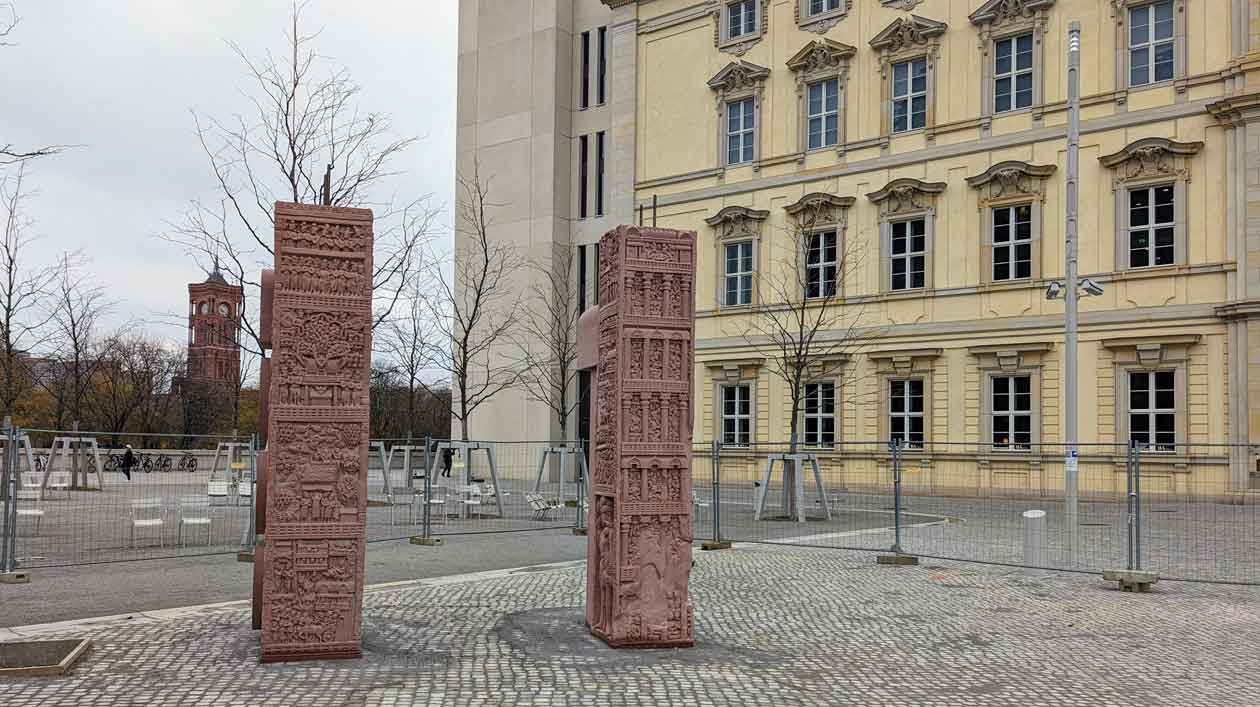Construction Gets Under Way: A Sanchi Gate for the Humboldt Forum
News from 11/18/2022
On November 17, 2022, construction work began on a replica of the magnificent eastern gateway of Sanchi in front of the Humboldt Forum.

On the Lustgarten side of the Humboldt Forum, construction is currently under way on a replica of the magnificent eastern gate of Sanchi. Situated at a spot clearly visible to the public on Schlossplatz, across from the Berlin cathedral, the gate will call attention to the famous collections of the Ethnologisches Museum (Ethnological Museum) and the Museum für Asiatische Kunst (Asian Art Museum) of the Staatliche Museen zu Berlin (National Museums in Berlin) in the Humboldt Forum. Yesterday, the project was officially introduced to representatives of the media in the presence of the Indian ambassador to Germany, H. E. Harish Parvathaneni.
The connection between the Sanchi Gate and the Ethnologisches Museum and the Museum für Asiatische Kunst goes back a long way: in 1886 a plaster cast of the original gate was erected at what was then the Royal Museum of Ethnology in Berlin. An additional copy, made of artificial stone, has stood in the museum quarter in the city’s Dahlem district since 1970. Sculptors from India are helping to build the sandstone replica in front of the Humboldt Forum, which is expected to be finished by the end of the year. The structures at Sanchi make up one of the oldest and most important surviving Buddhist sanctuaries; collectively they are classified as a UNESCO World Heritage site. The new replica of the almost ten-meter-high and approximately six-meter-wide eastern gate of this site is the first to be carved from sandstone. Richly detailed scenes adorn the surfaces of the three crossbeams and the two pillars. These mostly depict episodes from the life of the Buddha. The pictorial narratives are framed by a festive abundance of Buddhist symbols, erotic portrayals of lucky genies, and beautiful depictions of animals such as elephants, lions and peacocks. No figurative representation of the Buddha will be found, however. That is because, at the time the gate was designed, the Buddha was represented by means of symbols: as a throne under a tree, for example, or footprints, or similar imagery.

